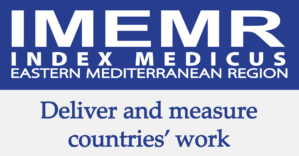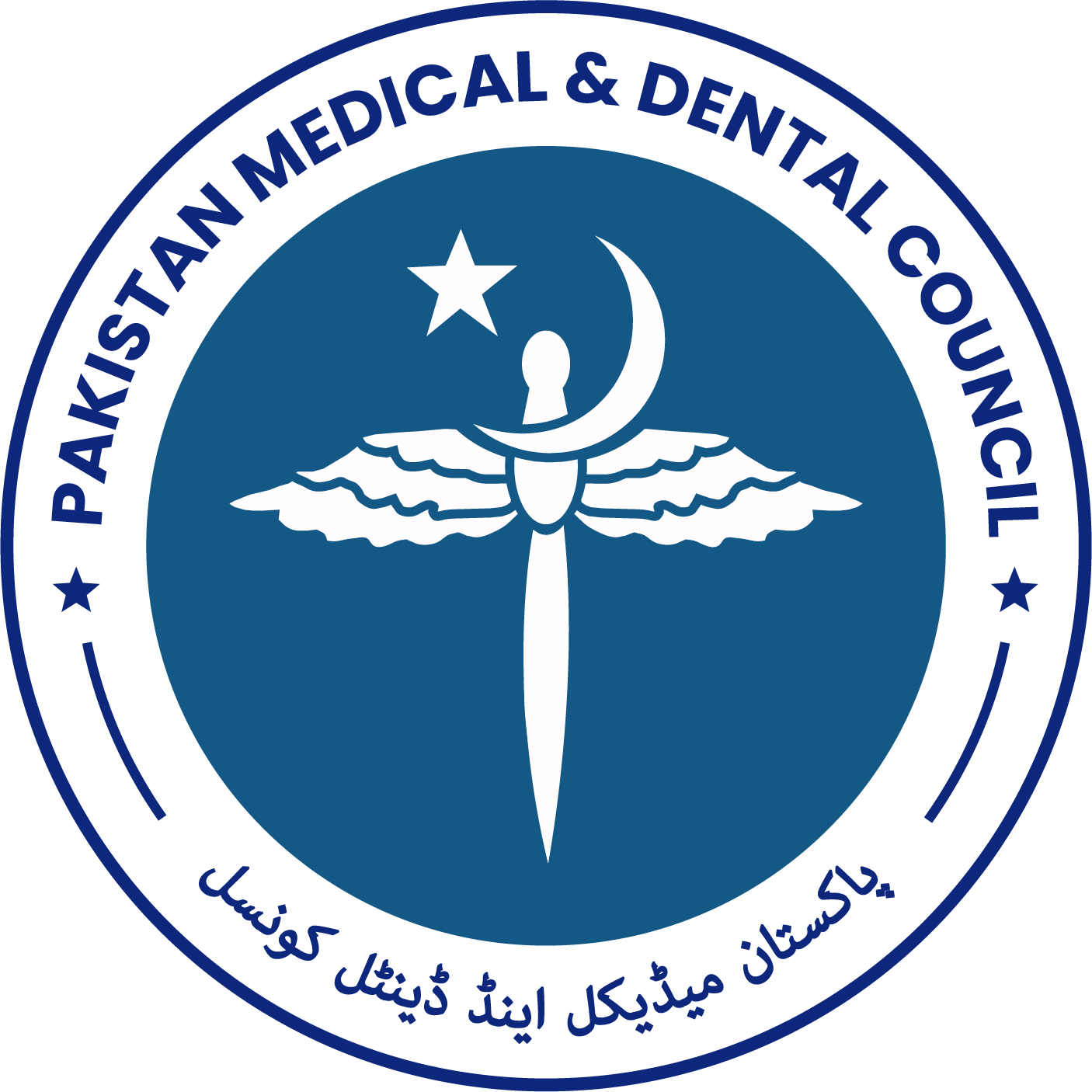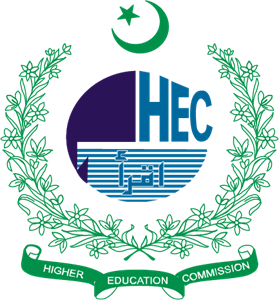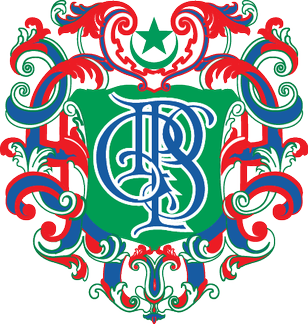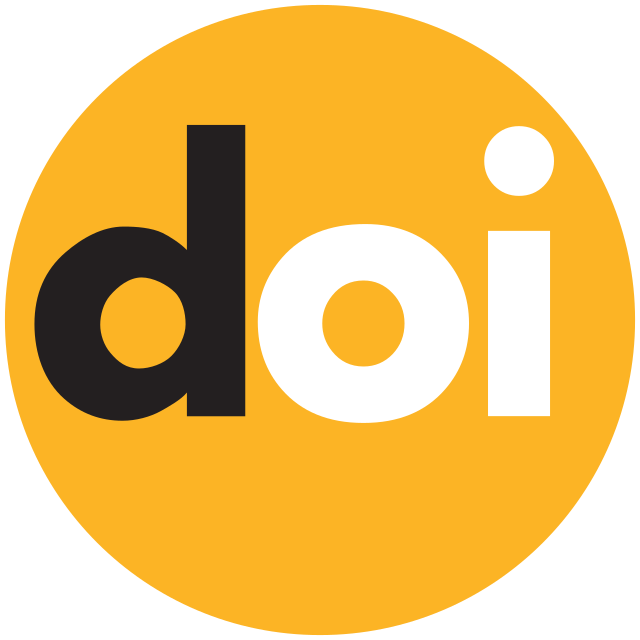For Authors
Guidelines for Authors:
Authors will have to register on https://journal.smdc.edu.pk/ to submit their manuscripts.
It is an OPEN ACCESS journal; there is NO ARTICLE SUBMISSION, PROCESSING, and PUBLICATION FEE.
Manuscripts submitted in the Journal of Shalamar Medical & Dental College (JSHMDC) will be considered if neither the article nor its contents have been submitted /published in any other journal.
Authors must pay PKR 5000 charges for withdrawing the article after acceptance of the manuscript.
Undertaking: Authors must upload an undertaking signed by all the authors with paper submission, Conflicts of Interest Declaration, and Author Agreement Form is available on the author’s dashboard.
All research work involving human subjects, human material, human data, or animals submitted for publication must be approved by an appropriate Institutional Review Board (IRB).
It is mandatory to submit an IRB approval letter with all articles as per ethical standards set by ICMJE.
Article Initial Processing Timeline
Upon receiving a manuscript, initial screening comments will be shared with the author within two weeks.
Following that, the author will be given an additional two weeks to address the suggested changes.
-
If no response is received by the end of the third week, a reminder will be sent.
-
If there is still no response by the end of the fourth week, the article will be declined due to non-compliance with the revision timeline.
AUTHORSHIP:
Authors must provide a final list of authors with their current affiliations, contact numbers and E-mail addresses on the manuscript at the time of submission, ensuring the correct sequence of the names of authors, which will not be considered for any addition, deletion, or rearrangement of authors after final submission of the manuscript.
Authors should meet all the four criteria for authorship as recommended by International Committee of Medical Journal Editors (ICMJE).
An "author" is generally someone who has made substantive intellectual contributions to the study. Authorship credit should be based on:
- Substantial contributions to the conception or design of the work or the acquisition, analysis, or interpretation of data for the work; AND
- Drafting the work or revising it critically for important intellectual content; AND
- Final approval of the version to be published; AND
- Agreement to be accountable for all aspects of the work in ensuring that questions related to the accuracy or integrity of any part of the work are appropriately investigated and resolved.
PLAGIARISM POLICY:
Plagiarism is the "stealing or misusing scholarly property and the significant copying of someone else’s work." Plagiarism is when large portions of the text have been copied and pasted without proper and unequivocal acknowledgment/attribution.
JSHMDC follows COPE guidelines. Any SCIENTIFIC MISCONDUCT will be dealt with as per COPE guidelines.
All the submitted manuscripts are checked for plagiarism through TURNITIN'S SOFTWARE, following the criteria/guidelines defined by the Higher Education Commission (HEC) of Pakistan, ICMJE, and COPE.
The similarity index should be less than 19%. If the similarity index is more than 50% it is rejected. If the similarity index is 19% or more than 19%, but less than 50% the manuscript is not processed further until revised by the author. If a plagiarized manuscript is submitted multiple times, it is rejected from further processing.
Publication misconduct is dealt by asking the corresponding author for an explanation within two weeks. If an acceptable explanation is provided by the author(s), the editorial board recommends appropriate changes, after which the review process for the submitted manuscript may commence. In no response in two weeks or if there is an unsatisfactory explanation, the editorial board will decide regarding the fate of the article and authors, including:
o REJECTION of the manuscript,
o RETRACTION of already published article
A RETRACTION notice will also be on the journal’s website. The authors will be blacklisted from further publication in the JSHMDC for two years or permanently, depending upon the nature of the misconduct. The institutional head, HEC, PMC, and other editorial associations may also be informed of this misconduct.
PEER REVIEW POLICY:
An acknowledgment is sent on receipt of the manuscript. The manuscript is checked by the editors and then sent for review. Double Blind Peer Review Policy is followed. The reviewers are given three weeks to review the paper. A reminder is sent to the reviewer if the review report is not received after three weeks. On receipt of comments, the reviewer's comments are communicated to the author. The author will be given two weeks to incorporate the reviewers’ comments in the revised manuscript. The article will be declined if no response is received (after two reminders) from the corresponding author. The revised version of the article is checked for incorporation of suggested changes. A period of 2-4 months is set to finalize the process and if approved, a letter of acceptance is issued to the author.
Refer to Peer Review Policy in detail at https://journal.smdc.edu.pk/index.php/journal/Peer_Review.
RESEARCH & PUBLICATION ETHICS POLICY: Please refer to the research and publications ethics policy before submission of research work.
CONFLICT OF INTEREST: The authors must state any ‘Conflict of Interest’ in the manuscript or on a Conflict of Interest form, which can be downloaded from the author’s dashboard.
Title Page: The title should not be too short or too long. It should communicate the real idea of the research to the reader. The title length should be less than 250 characters.
- Authors names & Affiliation (Each manuscript should have no more than two institutional affiliations)
- Corresponding author detail
All Randomized Trials must be according to CONSORT guidelines.
All Clinical Trials must be registered at clincaltrials.gov
Observational studies should be according to STROBE guidelines.
Qualitative research should be according to SRQR guidelines
GUIDELINES FOR ORIGINAL ARTICLE:
The word count for the text only (excluding abstarct, acknowledgments, legends of tables and figures, and references) should be less than 3000 words. The original research article should be prepared under the following sections:
Abstract: The abstract must not contain more than 250 words. The use of abbreviations should be minimized, and references should not to be quoted in the abstract. The abstract must be structured under the following headings:
- Background: It should explain the background of the study a summary of the existing literature, give the importance or contribution of the study to existing knowledge, its aims, and objectives.
- Methods: How the study was performed and statistical tests used.
- Results: The main findings.
- Conclusions: It must be clearly stated in the end.
- Keywords: Three to ten MeSH (Medical Subject Headings) keywords reflecting the main content of the article should be given at the end of the abstract.
Introduction:
It should address the background of the study and relevant existing literature with references, justify the importance of the study, how this study will contribute to the field, and in the end clearly mention its aims and objectives.
Methods:
The methods should include:
- Study design, duration, date, setting and sample size of the study.
- Reference of the article that was used for sample size calculation.
- Total number and characteristics of study population or description of materials used.
- Consent to participate in the study
- Approval from Ethical / Institutional Review Board
- Inclusion and exclusion criteria.
- Detail of data collection, all procedures and intervention. Generic names of the drug used in research should be used and mention the brand name in parentheses.
- Provide details of statistical analysis carried out for the study. Specify the level of significance used in statistical analysis.
Results:
Clearly state the findings of the study based on statistical analysis; subheadings may be used to describe the results. avoid duplication of results in text, and Table, and Figures.
Tables and Illustrations / Figures:
- There should be no more than four tables or illustrations
- Tables and figures must have a title, should be on a separate page.
- Tables submitted as photographs will not be accepted.
- Photographs of patients if used, must be with written permission.
- All photographs should be very clear, sharp, glossy and 5 x 7 inches in size.
- Figures must in JPEG, GIF format
- Results given in tables must not be duplicated in figures and vice versa.
- Figures and tables should be numbered according to the order in which they have been mentioned in the result section.
- Titles for figures/images/tables should be single-spaced.
Discussion:
There must be discussion of the important findings in the perspective of existing knowledge with references. Discussion of results with national & international literature, the discussion must be two-third of the "Introduction" section and must have two third of the total references. Limitations of the study if any must be mentioned at the end of the discussion.
Conclusions:
Clearly state the main conclusions and mention the importance of the study reported.
Acknowledgments:
All contributors must be mentioned in acknowledgments, such as a person who provided general support and material for the research. Financial support should also be acknowledged. Refer to the acknowledgment criteria policy at https://journal.smdc.edu.pk/index.php/journal/AcknowledgementCriteria_Policy
Source of funding:
Authors must declare the source of funding.
Authors contributions:
Contributions by all the authors should be mentioned, and it should be according to ICMJE guidelines
References:
o References should be on a separate page.
o The number of references in an Original Article must not be more than 25
o The references must be written in Vancouver style
o References must be single-spaced. more than 60% of references should be within last five years.
o If the authors are six or fewer list all authors, if more than six, list the first six followed by ‘et al’.
Following are examples of reference citations:
o Journal Article: Shahid A, Lone KP, Saeed S, Arslan M. Male offspring of both diabetic parents have higher insulin resistance and serum leptin levels compared to those with one diabetic parent. Hormones(Athens) 2008; 7: 313–19.
o Article within a journal by DOI
Slifka MK, Whitton JL. Clinical implications of dysregulated cytokine production. Dig J Mol Med. 2000; doi:10.1007/s801090000086.
o Article within a journal supplement
Frumin AM, Nussbaum J, Esposito M. Functional asplenia: demonstration of splenic activity by bone marrow scan. Blood 1979;59 Suppl 1:26-32.
o Books: Polit DF, Hungler BP. Nursing research principles and methods. 6th ed. Philadelphia: Lippincott Williams & Wilkins; 1999.
o Chapter in Book: Buse JB, Polonsky KS, Burant CF. Type 2 diabetes mellitus. In: Larsen PR, Kronenberg HM, Melmed S, Polonsky KS (eds). Williams Text Book of Endocrinology 2003; pp 1427-1467. Saunders, Philadelphia, PA.
o Online database
Healthwise Knowledgebase. US Pharmacopeia, Rockville. 1998. http://www.healthwise.org. Accessed 21 Sept 1998.
GUIDELINES FOR CASE REPORT:
- Clinical experience and short case reports may be submitted.
- It must contain < 10 references.
- Two or less than two tables or illustrations.
- The report must contain some new clinical experience or new information.
- Word count (excluding abstract, acknowledgments, legends of tables and figures and references) should be < 1500 words
- Case report should be structured under the following headings:
o Title:
o Abstract: (it should be unstructured having background, case presentation, conclusion, 3-10 keywords, word count must not be more than 250 words).
o Introduction: It must contain a summary of the existing literature.
o Case presentation: It must include detail of the patient’s related demographic information, medical history, sign and symptoms, treatment given or any procedure done, outcomes and any other significant details.
o Discussion, conclusion and References
Review Articles, Short Communication, Editorial, and Letter to the Editor, can also be submitted.
REVIEW ARTICLE:
It must contain information regarding databases for literature search and the period for selection of articles. The text of the review article should be between 2500-3000 words. it must have an unstructured abstract of < 250 words. The number of references in review articles must not be more than 80.
SYSTEMATIC REVIEW ARTICLES should be according to PRISMA guidelines.
EDITORIAL: Word count should be < 1000 words, having an unstructured abstract of about 150 words. The number of references in editorial must not be more than 8.
LETTER TO EDITOR It should normally not exceed 400 words, with not more than 5 references and be signed by all the authors-maximum 3 are allowed. Preference is given to those who take up points made in contributions published recently in the journal. Letters may be published with a response from the author of the article being discussed. Discussions beyond the initial letter and response will not be entertained for publication. Letters to the editor may be sent for peer review if they report scientific data. Editorials are written upon invitation.
SHORT COMMUNICATION: Word count should be < 1000 - 1200 words, having an unstructured abstract of about 150 words with two tables or illustrations and not more than 6 references.
Three to ten keywords should be given for all the categories of manuscripts under the abstracts as per MeSH [medical subject heading].
COMMENTARY: Word count should be less than 1500 words and no more than 15 references.
Use of Artificial Intelligence and AI-Assisted Technology in Preparation of the Manuscript: Authors should only use Artificial Intelligence (AI )and AI-assisted technologies to prepare their manuscripts to improve readability and language. AI technologies should not be used for the interpretation of the results and drawing scientific conclusions of the study. AI can generate authoritative-sounding output that may be incorrect, incomplete, or biased. AI and AI-assisted technologies cannot be listed as an Author or co-authors, and they can not be cited as well. Authors must disclose in the manuscript the use of AI and AI-assisted technologies in the preparation of the manuscript. The statement declaring the use of AI in the writing process will appear in the published work. However, authors are ultimately responsible and accountable for the contents of the work.
CHECKLIST:
Manuscripts submitted must contain the following information:
- LETTER OF Approval of the project by ‘The Institutional Research & Ethical Board’.
- Conflict of Interest
- Consent to participate in the study
- Acknowledgments


